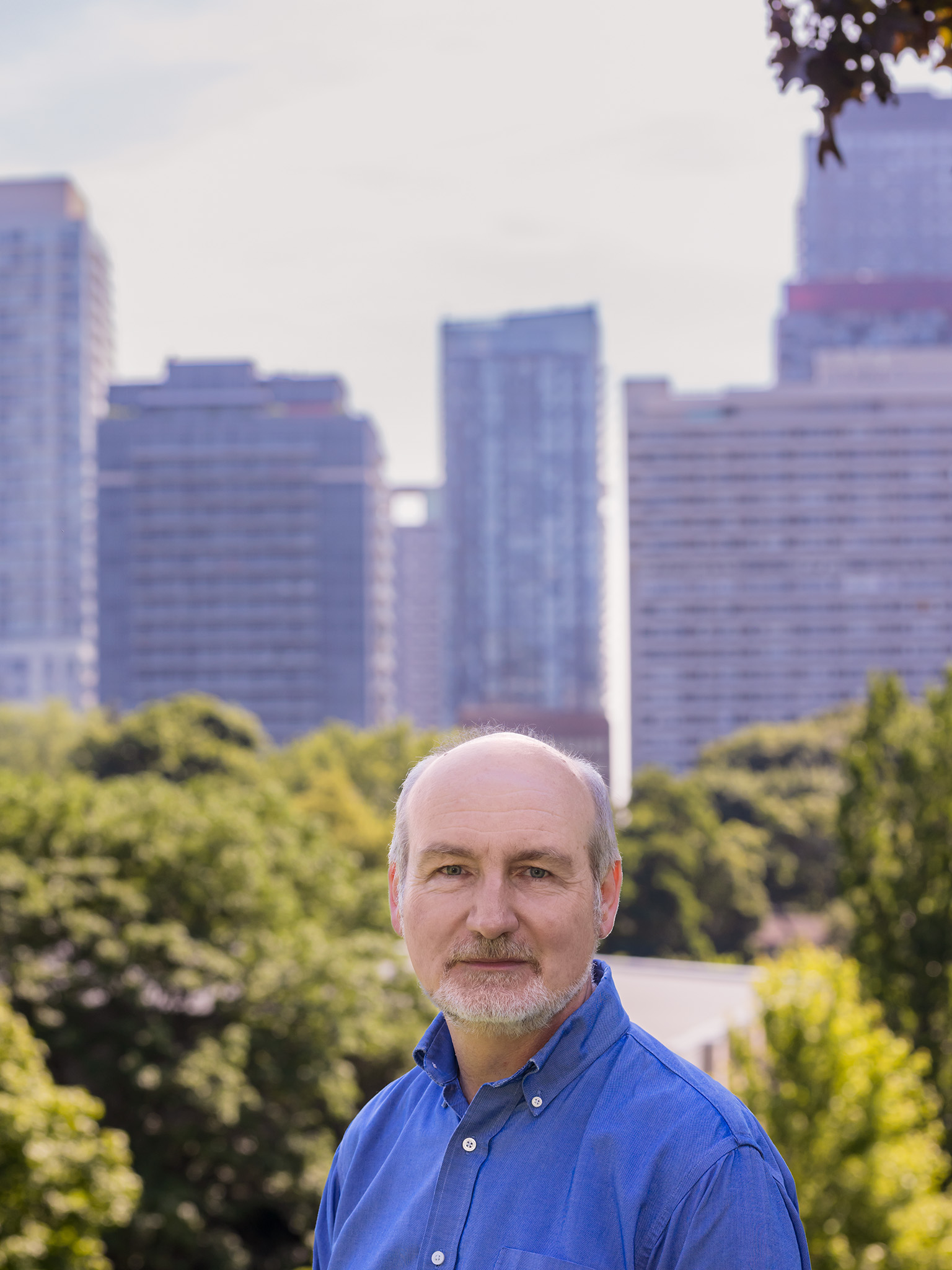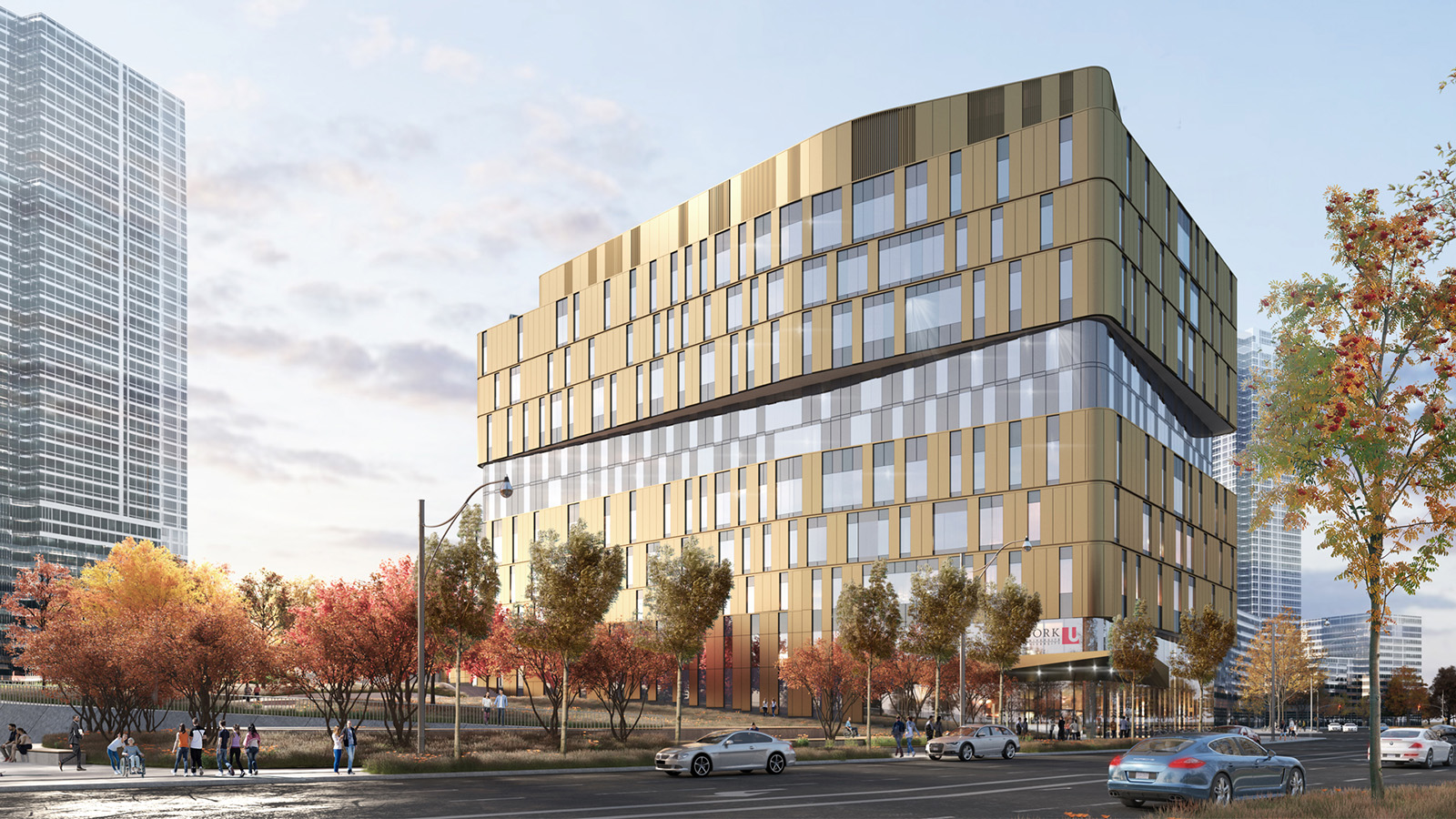Building Sustainability
by John Lorinc
photography by Horst Herget
When York University’s new Markham Campus opens its doors in 2024, the 10-storey building will mark a first for the high-tech suburban city in the northeast of the Greater Toronto Area. The $275-million facility, designed by Diamond Schmitt Architects, will be Markham’s first post-secondary campus, offering a range of science and technology programs, as well as student services, flexible internal spaces and a soaring atrium.
But the project, which broke ground in fall 2020, has been designed to meet LEED Gold standards – an environmental certification managed by the Canadian Green Building Council (CaGBC). It has green features such as on-site stormwater management and connectivity to a municipal district energy utility, which reduces carbon emissions from buildings in Markham.
Energy-efficient buildings cost somewhat more to build, but tend to be much less expensive to maintain over the long term.
The environmental features of Markham Campus reflect York’s commitment to the UN’s 17 Sustainable Development Goals, and are part of the University’s strategy to achieve net zero by or before 2049. According to York’s latest sustainability progress report, the University reduced electricity consumption by 24 million kWh since 2015. In terms of its built form, two other new buildings – the Rob and Cheryl McEwen Graduate Study and Research Building at the Schulich School of Business and the School of Continuing Studies – both feature innovative low-carbon features, including a “solar chimney” and photovoltaic facade panels.
York is part of a broader move across the post-secondary sector to drive low-carbon design, including in new student residence projects. For example, Boston’s Northeastern University secured a LEED Platinum certification for an 825-unit residence, the first private student housing project to achieve this designation. The building features low-water laundry facilities, LED lighting, drought-tolerant plantings, and locally sourced or recycled materials.

Closer to home, the University of Toronto completed a 750-bed passive-house residence at its Scarborough campus that will cut energy costs by 40 to 60 per cent compared to a conventional structure. Montgomery Sisam Architects, in turn, is building a student housing complex at Sheridan College modelled on the modular, deeply affordable housing projects that sprang up around the city during the pandemic.
Green design is exceptionally well-suited to housing projects owned by institutions – universities, as well as municipalities, co-ops and non-profits – that pay close attention to long-term operating costs. Energy-efficient buildings cost somewhat more to build, but tend to be much less expensive to maintain over the long term, and thus allow owners to keep fees or rents low.
Luisa Sotomayor, a housing expert and professor in York’s Faculty of Environmental and Urban Change (EUC) observes that the potential benefits of sustainable affordable housing have often been “absolutely overlooked” by many planners. “We need to start looking at this.”
The potential benefits of sustainable affordable housing have often been “absolutely overlooked” by many planners.
The potential synergies, adds EUC Professor Mark Winfield, coordinator of York’s Sustainable Energy Initiative, should have particular resonance with post-secondary institutions that are under increasing pressure to provide or develop better and more affordable housing for students, and particularly students who lack family financial support.
Sotomayor, whose research focuses on student housing, has explored recent development trends in such projects, which have tended to involve private-sector partners building highrise, condo-style apartment buildings. Such investments respond to mounting pressure from municipalities and neighbourhoods that have become dominated by overcrowded rooming houses that cater mainly to post-secondary students.
She also points out that sustainability in student housing per se is not necessarily achieved through new construction, which often relies on the consumption of carbon-intensive materials such as steel and concrete, even in otherwise energy-efficient buildings. “In a city like Toronto, a lot of the emphasis for affordable housing solutions has been placed on new development,” she observes. “But I think something that is being overlooked is the role of conserving the affordable housing that is already there.”
There’s evidence that the mutually reinforcing benefits of sustainable affordable housing initiatives are gaining broader attention from the design community, government funders and housing agencies. In 2019, the Federation of Canadian Municipalities launched a $300-million program, funded by Ottawa, to invest in sustainable affordable housing projects through 2026. In 2020–2021, the group earmarked funding for 33 such initiatives, comprising a total of 3,000 units.

Among them, a 157-unit apartment in Vancouver for low- and moderate-income seniors and people with disabilities. The project will be built to so-called “passive house” standards – an ultra-sustainable design approach that can slash energy expenses by up to 90 per cent, using heavily insulated walls, triple-glazed windows and various waste-heat-recovery systems. (The funding for this venture also comes from B.C. and a federal housing program.)
Winfield points out that organizations such as the Low-Income Energy Network, which is part of the Canadian Environmental Law Association, have stepped in to advocate for individuals and families living in older affordable housing complexes that require energy retrofits. The challenge, he adds, is that capital for such projects can be scarce.
“A lot of the emphasis for affordable housing solutions has been placed on new development,” she observes. “But I think something that is being overlooked is the role of conserving the affordable housing that is already there.”
Given both the acceleration of the housing affordability crisis and the diminishing timeline to take meaningful action to curb emissions, Winfield argues that policymakers would be well-advised to look to measures that allow non-profit housing providers with the requisite upfront capital to construct resilient, low-carbon buildings that will cost less to operate over the long run.
As for post-secondary institutions, Winfield says they can not only marry these twinned objectives, but also treat campuses as “pedagogical assets.” Winfield points out that his colleagues in York’s engineering faculty now teach graduate students who are keen to find new solutions for building low-carbon communities and answer questions such as “how [to] manage something like a university campus as a micro-grid and potentially tie together a range of assets into a reliable and stable and resilient and affordable energy system.” As he notes, “We’re ideally positioned, in many ways, to be the leaders in practice in those sorts of goals.” ■